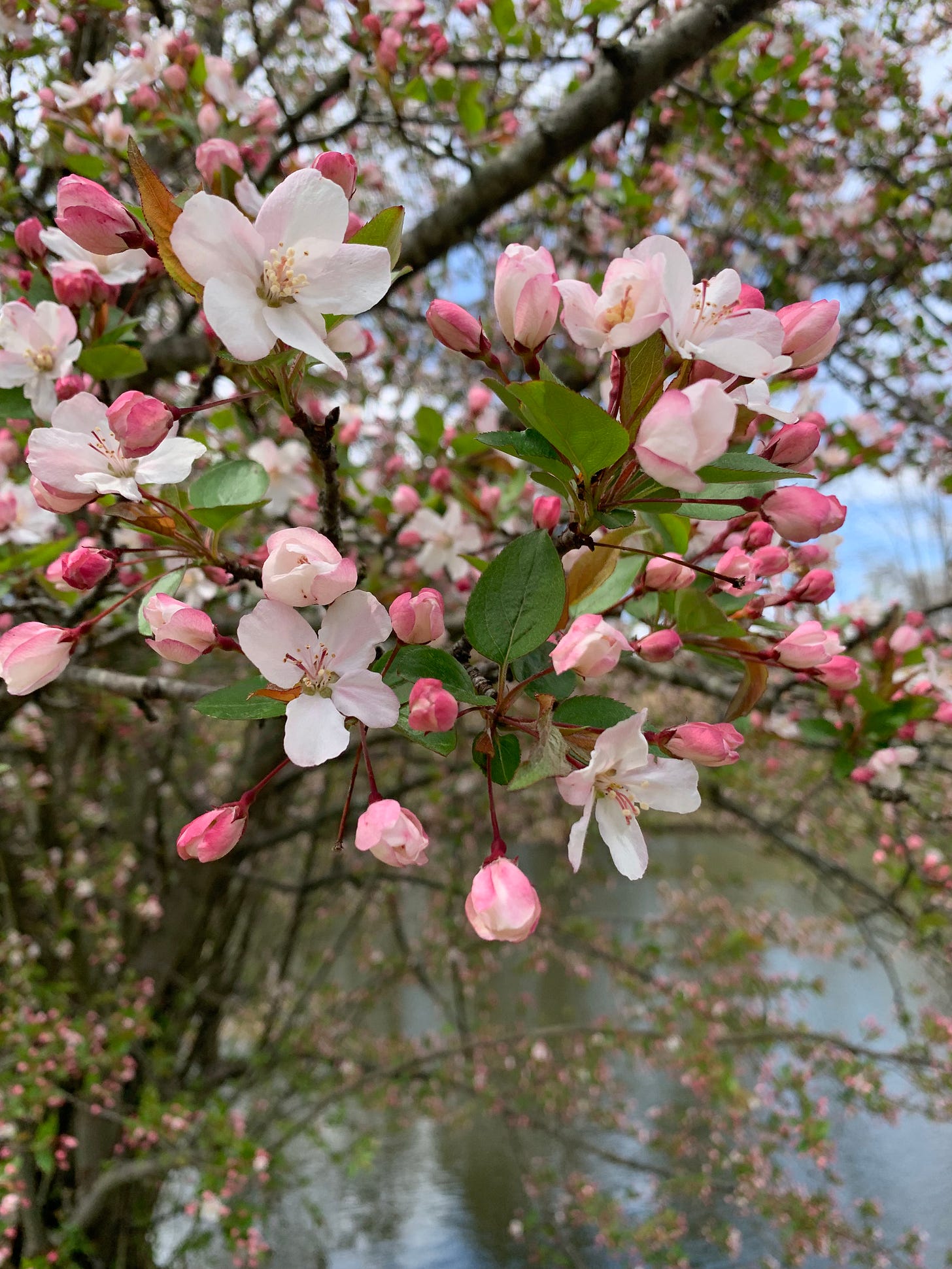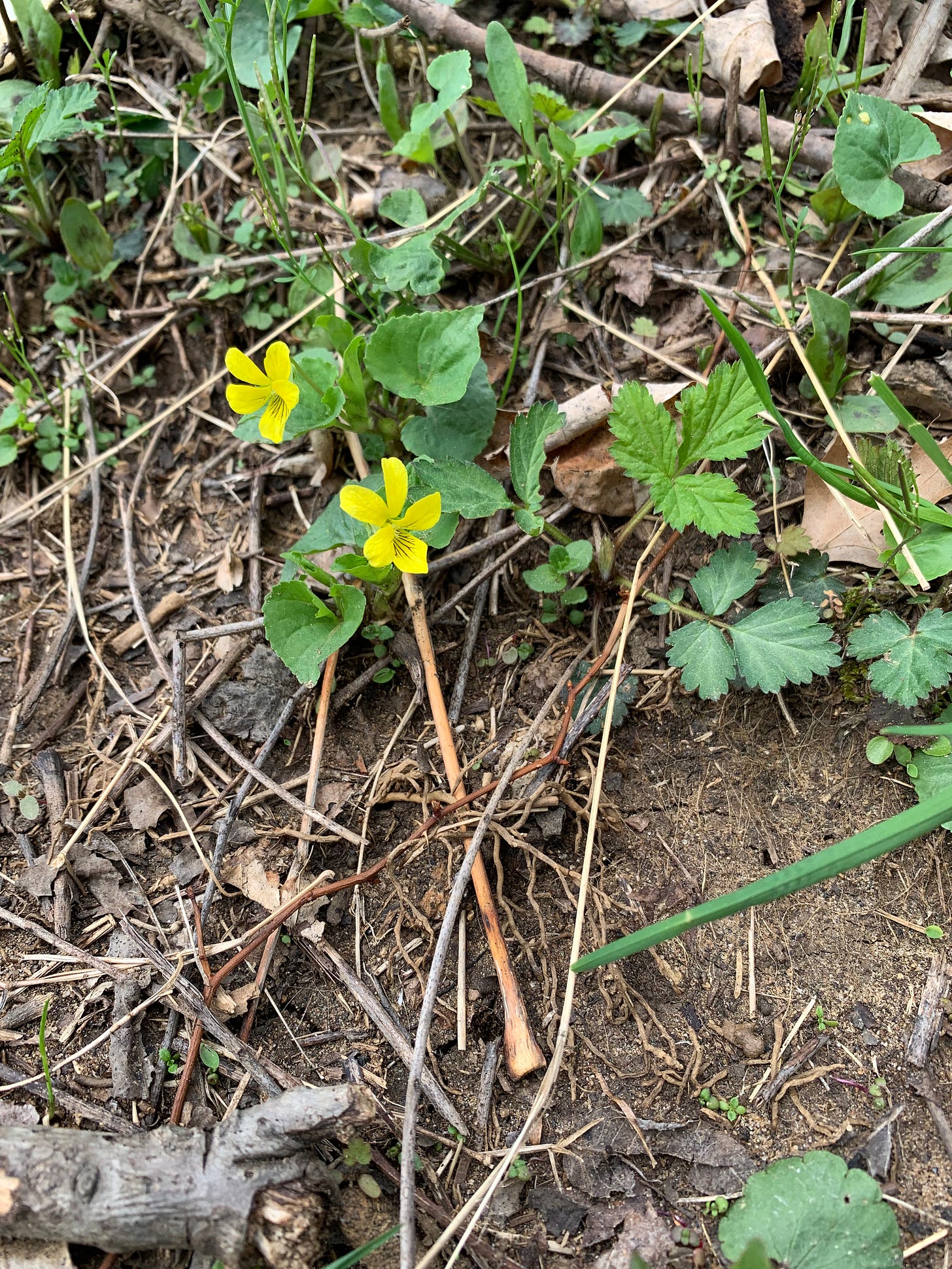The Steward’s Anticipation
Puddock Hill Journal - Entry #2: Pay no attention to those mating toads.
We just experienced two summery warm days here in the Brandywine Valley, but while the grass has greened and early spring ephemerals have begun showing off, I’m mostly still looking at a landscape of browns.
Anticipation is the gardener’s dominant emotion this time of year. Did the harshness of winter finish off that struggling shrub? Will the toads that always visit us return? Did the young trees we planted last fall make it through winter?
Good news! The toads are back, and we spotted two making love by the back door just last night. (Oh, go ahead: Blush.)
The latter question, however, consumes most of my stewardship energy. Over the past two autumns, we planted 400 native trees in the early stages of our attempt to reforest the wild edges of Puddock Hill. The first tranche of these (autumn 2020) were bare-root saplings purchased in volume from the Arbor Day Foundation, an approach I would not recommend to anyone who has more than the most minimal budget. Each tree is a mere twig sticking out of the ground, and we found the quality to be poor. While Arbor Day does claim to guarantee the trees, getting the organization to honor that pledge proved a waste of time. Furthermore, we couldn’t bear looking at a forest of reedy twigs for another year.
Because we were buying in bulk, we could only plant five tree species from a very limited selection, but we expected that to make a fine beginning. (I’ll have more on the details of our selections at a later date.) About two-thirds of this tranche of trees survived last winter. As we had staked them to prevent accidental damage from mowing and string trimming (or even from just stepping on the damn things), we had easier digging to replace the non-survivors a year later (autumn 2021). These trees were larger (about 3-5 feet tall) and came from local nurseries. It goes without saying that for this second tranche we could select a great deal more variety. How many of these have survived winter, though? We don’t know yet, but we’ll soon find out!
Deciduous plants, of course, leaf out at different times, depending upon species and, sometimes, cultivar. Since returning east two weeks ago, I find myself studying the tiny little buds for signs of progress—even for signs of life. Of course, one could just scratch the bark with a fingernail or a tool to see whether the cambium is green, but I hate this shortcut, as I detest the idea of doing even a little bit of damage to a plant unless strictly necessary. Instead, I choose to embrace the anticipation and satisfy myself with reading subtle clues.
I’m already seeing greening buds on the fastest-growing trees, most notably tuliptree (Liriodendron tulipifera)—which, by the way, is in the magnolia family—and sassafras (Sassafras albidum). While we have several older tuliptrees on the property, we planted more of this towering native, which I’ve seen growing straight as rain to 100 feet in woodlands in our region. All of our sassafras trees are volunteers that “arrived” in spring 2021, six months after we erected our deer fence.
Yeah, I put “arrived” in scare quotes. You’ll learn why another day. I find myself wanting to run off on tangents to explain so many of the plants and strategies alluded to above, but all in good time. May you embrace the anticipation!
Your reward for reading today is some pictures of the early action. These native common blue violets (Viola sororia) crop up in the lawn every year (invasive Japanese stiltgrass, an annual, likely occupied the bare dirt that’s showing):
This non-native crab apple (Malus sp.) grows beside the big pond and never fails to put on a show:
We have the first signs of native Robin’s-plantain (Erigeron pulchellus). This herbaceous plant tends to stick around all spring:
Downy yellow violet (Viola pubescens) grows on the slope north of the big pond path:
And non-native dandelions (Taxacum officinale) colonize the packed ground by the barn door:
Although we endeavor to create a landscape dominated by natives, the moment you stop worrying about maintaining the perfect (and perfectly useless) lawn, you may come to appreciate the miraculous dandelion. It feeds the first bees of the season. It grows in the most hardscrabble environments. You can eat it. And you can make wine from its flowers. Any plant you can turn into wine, can’t be all bad!
Enjoy the little things while you wait for the trees.







